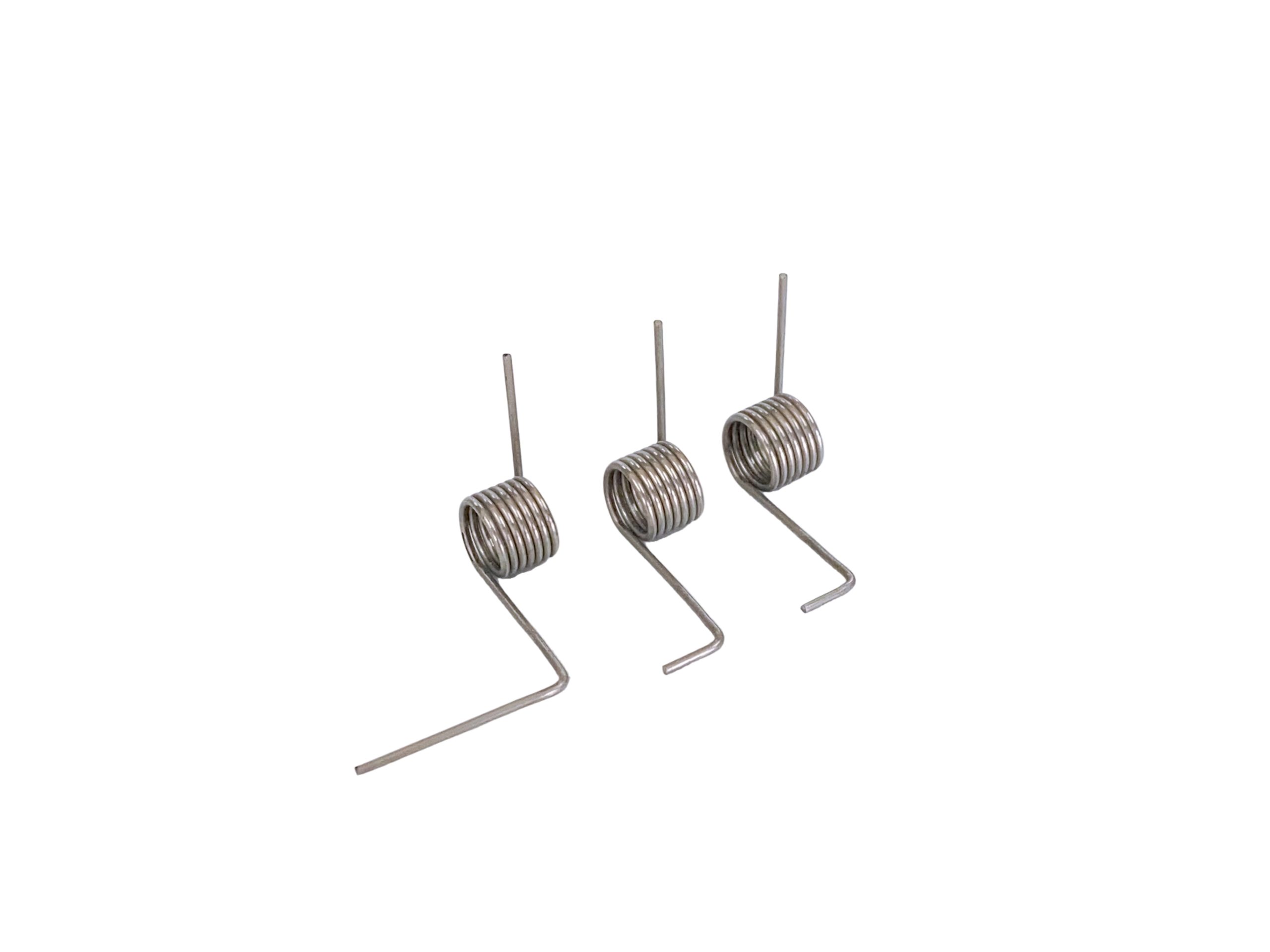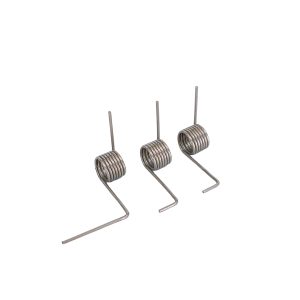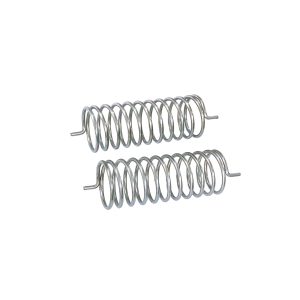Torsion Spring
A torsion spring is a mechanical component that stores and releases energy through elastic deformation, primarily generating torque by twisting (rotating) around an axis. Here’s a detailed overview:
- Working Principle
- When one end of the spring is fixed and the other is twisted by an external force, the spring coil (usually helical) deforms elastically, storing mechanical energy.
- Upon removing the force, the spring returns to its original shape due to material elasticity, releasing torque.
- Key Features
- Motion Type: Rotates around an axis (unlike linear compression or extension).
- Torque-Angle Relationship: Torque is proportional to the twist angle (Hooke’s Law: T = k \thetaT=kθ, where TT is torque, kk is torsional stiffness, and \thetaθ is the angle of twist).
- Self-Returning: Most torsion springs automatically return to their initial position.
- Common Types
- Helical Torsion Spring: The most common type, with coils rotating around a central axis (e.g., clamps, door hinges).
- Double Torsion Spring: Combines two sets of coils with opposite winding directions for higher torque.
- Linear Torsion Spring: Combines twisting and linear motion (e.g., garage door balancing systems).
- Flat Spiral Spring: Made of flat metal strips (e.g., clock mainsprings).
- Key Design Parameters
- Material: Typically high-carbon steel, stainless steel, or music wire, requiring high elastic limits and fatigue resistance.
- Coil Dimensions: Inner diameter (ID), outer diameter (OD), and wire diameter (d).
- Torsional Stiffness (k): Torque per unit angle (N·mm/° or N·m/rad).
- Maximum Twist Angle: Safe deformation limit; exceeding it causes permanent deformation.
- Winding Direction: Left-hand or right-hand, must match installation orientation.
- Applications
- Household Items: Clothespins, mousetraps, door latch return springs.
- Industrial Equipment: Valve switches, robotic arm joints, clutches.
- Automotive: Wiper blade return mechanisms, seat adjusters.
- Electronics: Flip phone hinges, laptop screen supports.
- Selection & Considerations
- Load Calculation: Choose stiffness (k) based on required torque and twist angle.
- Fatigue Life: For high-frequency use, select durable materials (e.g., stainless steel over plain steel).
- Installation: Ensure secure anchoring to avoid stress concentration.
- Lubrication & Corrosion Protection: Coatings (e.g., zinc plating, oil) for humid environments.
- Common Issues
- Permanent Deformation: Caused by overloading or repeated twisting; requires redesign.
- Noise: Due to friction; lubrication can help.
- Fracture: Material defects or exceeding fatigue limits; upgrade to higher-strength materials.
Shuangyuan produce various tension spring with wire diameter from 0.03-16mm




